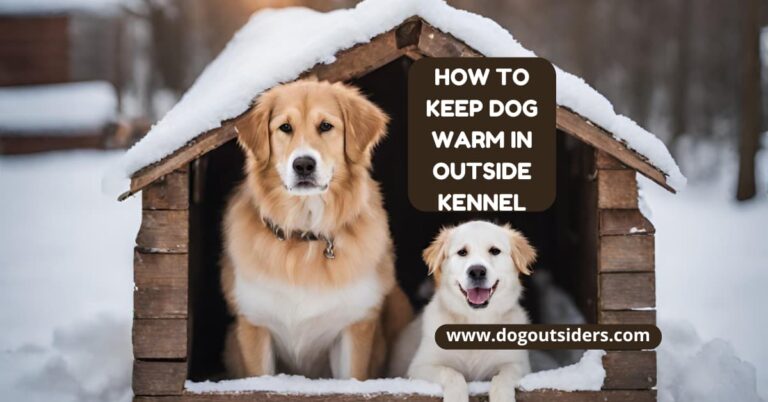When the temperatures drop, it’s essential to ensure your furry friend stays cozy outside. From insulated dog houses to heated beds, there are various ways to keep your dog warm and comfortable during chilly weather. Providing proper shelter, cozy blankets, and access to warm water can make a significant difference in keeping your canine companion snug and happy outdoors. Scroll down for some essential”ways to keep dogs warm outside“!
Key Takeaways
- Provide your pet with a warm sleeping area indoors to shield them from drafts and harsh weather conditions.
- Protect your dog’s paws by using paw wax or booties to prevent frostbite and irritation.
- Dress your pet in a suitable sweater or jacket to help retain body heat in cold temperatures.
- Ensure your pet stays hydrated by providing fresh, unfrozen water regularly.
- Limit your dog’s consumption of snow, as it can lower their body temperature and lead to health issues.
- Adjust your pet’s food intake accordingly to support their energy needs in colder weather.
1. Provide your pet a warm place to sleep away from drafts in your home or the elements outside.
Creating a cozy sleeping spot for your furry friend is essential to keep them warm and comfortable. Ensure the area is draft-free to prevent cold air from chilling your pet. Placing a heated pet mat can provide extra warmth during colder nights.
Position the sleeping spot away from windows and doors to avoid drafts that can make your pet uncomfortable. Using blankets or bedding with proper insulation can also help in retaining heat, keeping your dog snug and cozy. Consider setting up a warm space in your garage or inside your home where your pet can rest undisturbed by wind or harsh weather conditions.
2. Protect their paws when outside
Using pet-safe paw balm is essential to shield your pup’s paws from harsh weather conditions. These balms act as a protective barrier against ice, snow, and salt that can irritate your dog’s skin. Consider investing in dog booties to provide an extra layer of protection for your furry friend’s paws. Booties help in keeping their paws warm and prevent any injuries from walking on cold surfaces. After outdoor walks, make sure to wipe your pup’s paws thoroughly to remove any harmful chemicals like ice-melting agents that can cause irritation or poisoning if licked off.

Taking these precautionary measures ensures the safety and comfort of your pooch during outdoor adventures, preventing potential paw injuries and discomfort caused by extreme weather conditions.
3. Putting your pet in a sweater or jacket can help if you have the right kind
When it comes to keeping your dog warm outdoors, choosing a well-fitted, insulated sweater or jacket is crucial. This ensures that your furry friend stays cozy and comfortable based on their size and breed. Opt for waterproof outerwear to shield your pet from rain or snow, preventing them from getting wet and cold.

Consider layering with both a sweater and jacket for extra insulation during extremely cold temperatures. By providing your dog with the appropriate clothing, you can effectively protect them from the harsh elements while allowing them to enjoy outdoor activities comfortably.
4. Keep your pet hydrated
Ensuring water availability for your pet is crucial to prevent lethargy and dehydration, even in cold weather. Provide fresh, unfrozen water consistently, especially during outdoor activities. Monitoring your pet’s water intake is essential as they may not drink enough when it’s cold.

Dehydration can lead to serious health issues, affecting their overall well-being. Consider using a heated water bowl to prevent freezing in low temperatures, ensuring your pet has access to water at all times. Avoid using chemicals or additives in the water that could be harmful to your pet’s health.
5. Limit snow consumption
Prevent stomach upset: Discourage your pet from consuming snow to avoid digestive issues and potential health risks.
Indoor playtime: Offer alternative indoor activities to keep your dog entertained and reduce their urge to eat snow.
Early detection: Monitor your pet’s behavior closely to catch any signs of excessive snow ingestion promptly.
6. Adjust your pet’s food intake
To ensure your dog stays warm in colder weather, consult with your veterinarian to determine the right amount of food. Opt for smaller, more frequent meals to help maintain energy levels and warmth. High-quality, nutrient-rich food is essential for supporting your pet’s overall health during the chilly months. By adjusting your pet’s food intake accordingly, you can help them stay comfortable and healthy outdoors.

7. Keep your pet on a leash or in a securely fenced yard if you head outside
When taking your dog outdoors, always use a sturdy leash to ensure their safety and prevent them from wandering off. A securely fenced yard is essential to keep your outdoor dog contained and safe from potential hazards. By supervising your pet closely, you can prevent accidents and ensure they stay within a safe area. Supervision is key to maintaining your dog’s well-being while they enjoy outdoor activities.

Remember, even the most well-behaved dogs can get distracted, so it’s crucial to have them on a leash or in a secure enclosure at all times. Ensuring these safety measures are in place will give you peace of mind while allowing your furry friend to enjoy the outdoors safely.
8. Invest in cold-weather gear
Investing in durable, insulated dog coats and jackets is crucial for keeping your furry friend warm during walks in cold temperatures. These pieces provide extra warmth and protection against the chill. Consider getting a waterproof dog raincoat to shield your pet from rain or snow, ensuring they stay dry and cozy. Don’t forget about dog boots, which are essential for safeguarding their paws from cold, wet, or icy surfaces. These items not only offer comfort but also prevent issues like hypothermia during extreme weather conditions.
9. Create a cozy space

Design a snug area indoors with soft bedding for your dog to relax and stay warm. Add blankets or cushions to enhance the coziness of the spot. Placing this space near a heat source can provide additional warmth during colder days. This designated warm spot will ensure that your pet has a comfortable retreat from the chilly outdoor temperatures.
10. Raise your dog’s bed off the ground
Elevating your pet’s bed is crucial to keep them warm outdoors. By using a raised platform, you prevent direct contact with cold surfaces, ensuring their comfort and health. Opt for a raised dog bed with supportive padding that offers insulation from chilly grounds.

Adding a cozy blanket or cushion on the elevated bed provides extra warmth and coziness for your furry friend. This simple adjustment can make a significant difference in keeping your dog comfortable during colder weather.
Conclusion:
I’ve covered some key ways to keep your furry friend warm and cozy during those chilly days. From providing a snug sleeping spot to investing in cold-weather gear, there are plenty of simple yet effective strategies to ensure your pet stays comfortable when outside. Remember, protecting their paws, keeping them hydrated, and creating a warm space are all vital for their well-being. So, take these tips to heart and show your dog some extra love during the cold season!
A little effort goes a long way in keeping your pet safe and happy. So, don’t hesitate to implement these suggestions and watch your dog thrive even in the coldest weather. Your furry companion will thank you for it! Keep them warm, keep them safe, and enjoy those winter adventures together.
FAQ’s:
To protect your dog’s paws in cold weather, consider using paw wax or booties to prevent frostbite and irritation from salt on the ground.
It is not recommended to leave your dog outside in winter for extended periods, as they can suffer from hypothermia. Provide a warm shelter and limit outdoor time.
Yes, you may need to adjust your dog’s food intake during winter. Dogs burn more calories to stay warm, so consult with your vet to ensure they are getting enough nutrients.
Signs that your dog is too cold include shivering, seeking warmth, curling up tightly, and lifting their paws off the ground. Monitor their behavior closely in cold weather.
Raising your dog’s bed off the ground can help prevent them from losing body heat to the cold floor. Use a raised bed or add extra padding underneath for insulation.







6 Comments